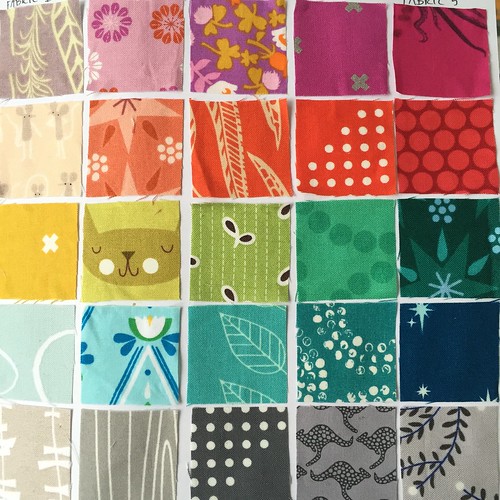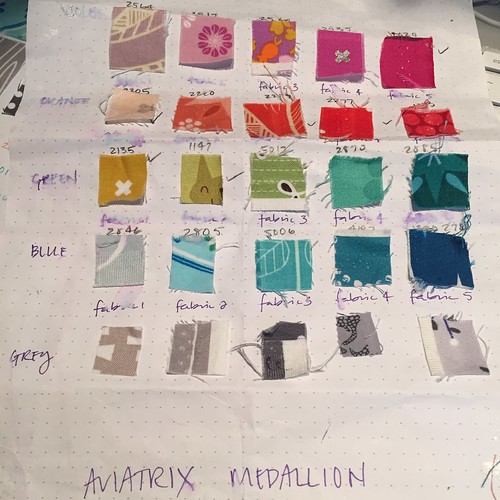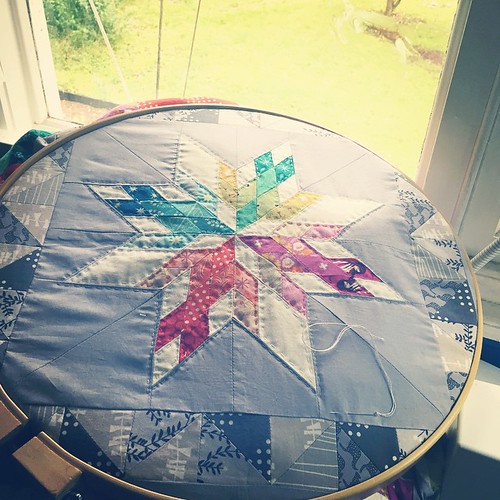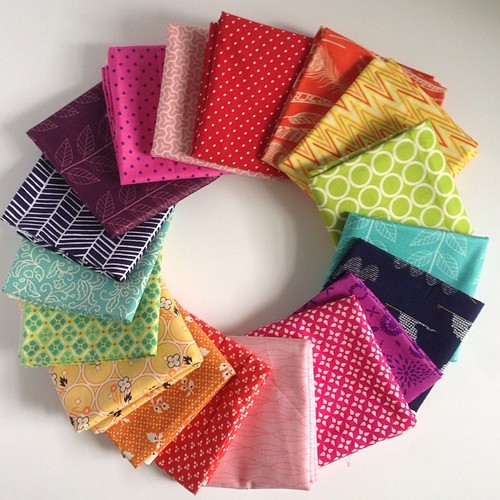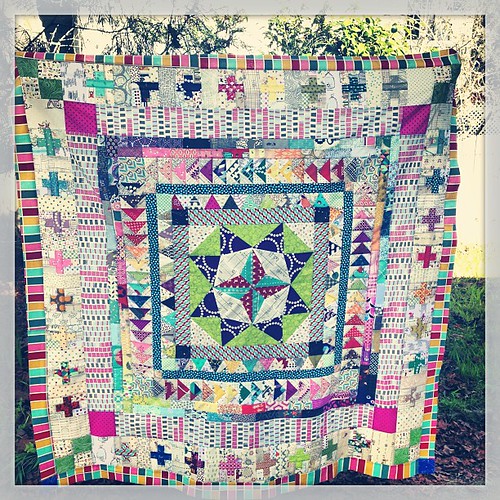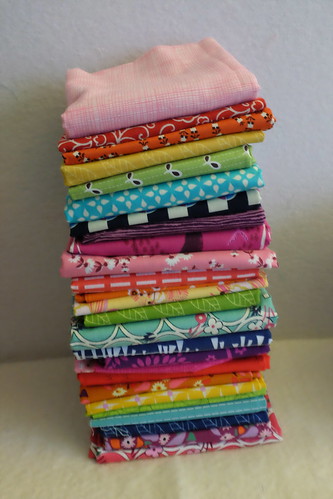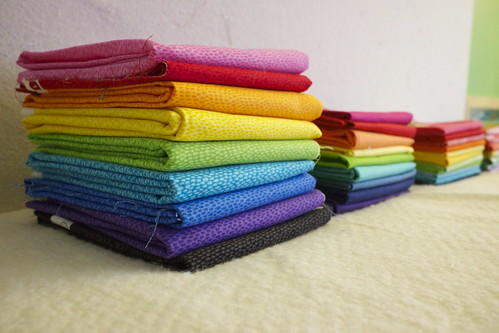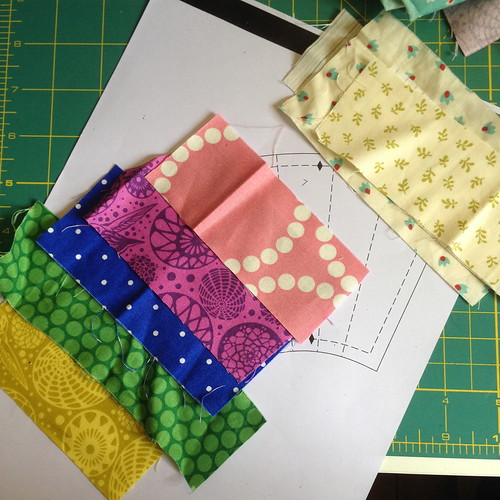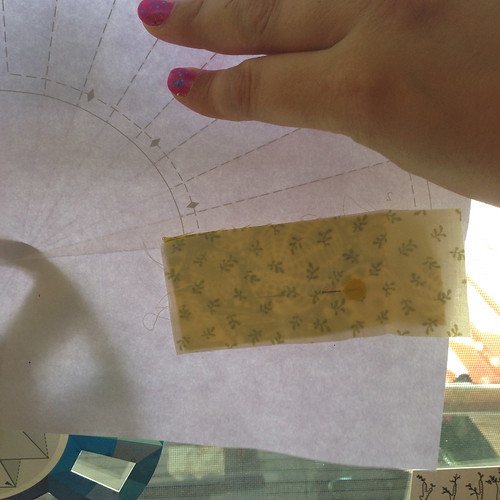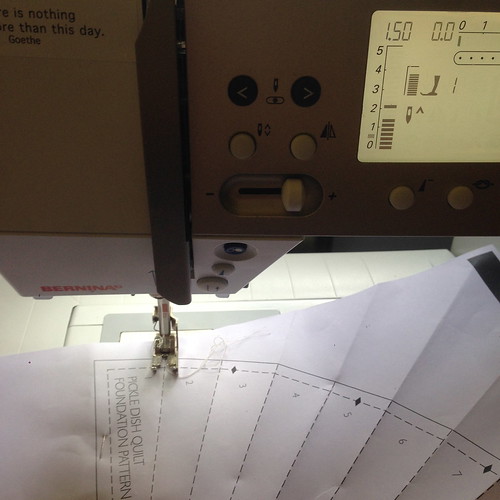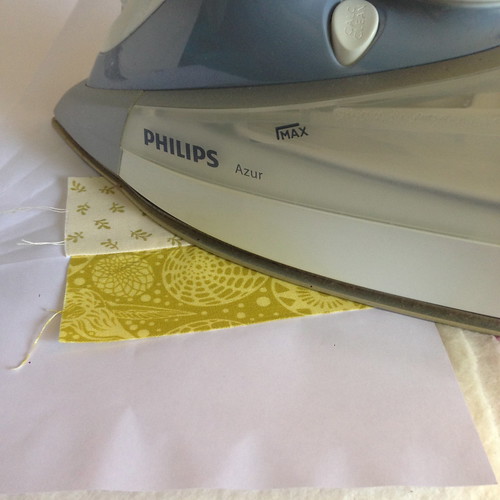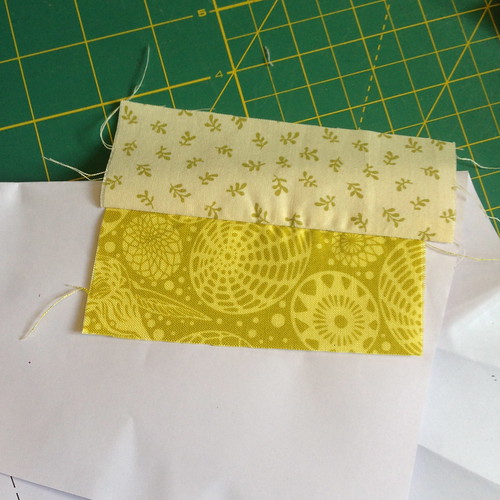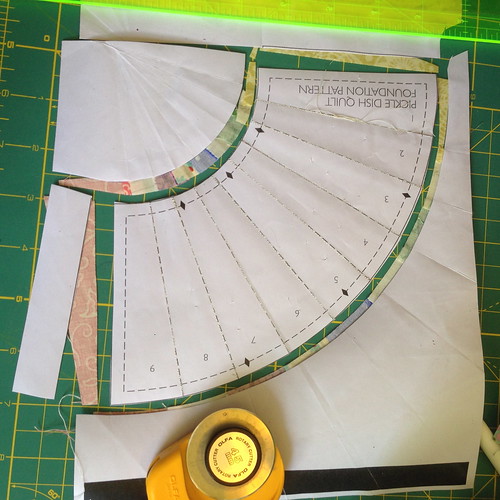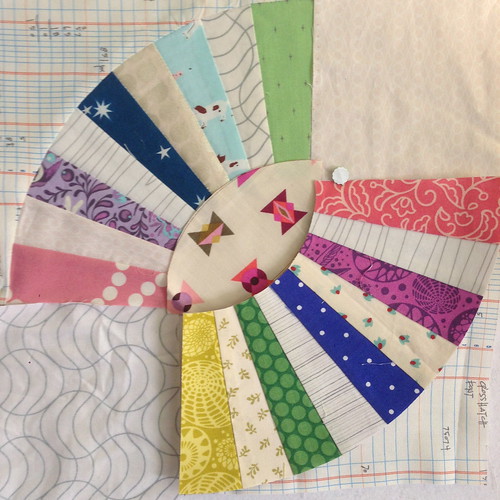Aviatrix Medallion - Fabric & Thread
 Thursday, December 11, 2014 at 6:54PM
Thursday, December 11, 2014 at 6:54PM Hi everyone!
Having finished the Aviatrix Medallion quilt top and rather hastily basted it, I was ready to quilt. I have had the vision for it for some time: I wanted to echo quilt most of it by hand, using perle cotton.
Now, for a quick refresher, in the Aviatrix Medallion pattern, there are 25 FQs (plus neutral and white bg yardage) required. Each of those, in my version and Elizabeth Hartman's original, is a different color or shade. (If you want to see something cool, you can check out her alternate colorway page. I am seriously considering that winter palette in print fabrics.)
Here are my colors. I stuck pretty close to her original palette.
Each of the fabrics is grouped according to a color family. I will list them all here, left to right. BE WARNED, I am not digging up all the proper names or item codes of these fabrics for this write up. If you're DESPERATE to know, I'll search it out for you, just let me know in the comments. :)
Violet Group
- Feather, Field Study, Anna Maria Horner, Westminster/Free Spirit (2564)
- Floral, Mustang, Melody Miller, Cotton + Steel (2515)
- Calico, Briar Rose, Heather Ross, Windham (2540)
- XOXO, Basics, Rashida Coleman-Hale, Cotton + Steel (2535)
- Swimming Sisters, Mendocino, Heather Ross, Westminster/Free Spirit (4020)
Orange Group
- Mice, Catnap, Lizzy House, Andover (2205)
- Stars, 1001 Peeps, Lizzy House, Andover (2220)
- Feather, Field Study, Anna Maria Horner, Westminster/Free Spirit (2277)
- Dottie, Basics, Rashida Coleman-Hale, Cotton + Steel (2277)
- Red Spot, Rainy Days & Mondays, Riley Blake Designs (1103)
Green Group
- XOXO, Basics, Rashida Coleman-Hale, Cotton + Steel (2135)
- Cats, Catnap, Lizzy House, Andover (1147)
- Green Floral, Flea Market Fancy Reprint, Denyse Schmidt, Westminster/Free Spirit (5017)
- Pearl Bracelet Tone on Tone, Lizzy House, Andover (2870)
- Stars, 1001 Peeps, Lizzy House, Andover (2885)
Blue Group
- Blomster, Mormor, Lotta Jansdotter, Windham (2864)
- Diamonds, Lotus Pond, Made by Rae, Cloud 9 (2805)
- Stems, Simply Color, V & Co, Moda (5006)
- Circle Dot, Shape of Spring, Eloise Renouf, Cloud 9 (4182)
- Stars, Constellations, Lizzy House, Andover (2783)
Grey Group (4670)
- Kitestrings, Glimma, Lotta Jansdotter, Windham
- Woodgrain, Les Amis, Patty Sloniger, Michael Miller Fabrics
- XOXO, Basics, Rashida Coleman-Hale, Cotton + Steel
- Kangaroos, Terra Australis, Emma Jean Jansen, Ella Blue Fabrics
- Catmint, Catnap, Lizzy House, Andover
White Background Fabrics (2024)
- RJR Supreme Solid in White
- XOXO, Basics, Rashida Coleman-Hale, Cotton + Steel
- Dottie, Basics, Rashida Coleman-Hale, Cotton + Steel
- Netorious, Basics, Rashida Coleman-Hale, Cotton + Steel
Grey background fabric (2615)
- Michael Miller Cotton Couture in Ozone, bought from Polka Dot Tea Fabrics
Now, lest you think I am super organized and really clever, here is what my shocking original fabric reference sheet looks like!!
Hahaha. It's been through the war.
I chose several coordinating threads and here they are in my little tin. If you are interested which Aurifil thread colors I chose, they are listed next to the fabric in parenthesis. For the grey family, rather than matching each color, I chose a nice variegated grey, and another, softer solid grey for the background grey. All of the white fabrics will be quilted with true white.
I do plan to quilt this quite close, so I am hoping this is a handy reference in case I need it in future. It's a bit of an outlay to invest in so much thread, but I know how much I love hand-quilting, so I'm certain that these colors will be in frequent rotation!
That's about it for fabric & thread - hit me in the comments if you have any questions! x
